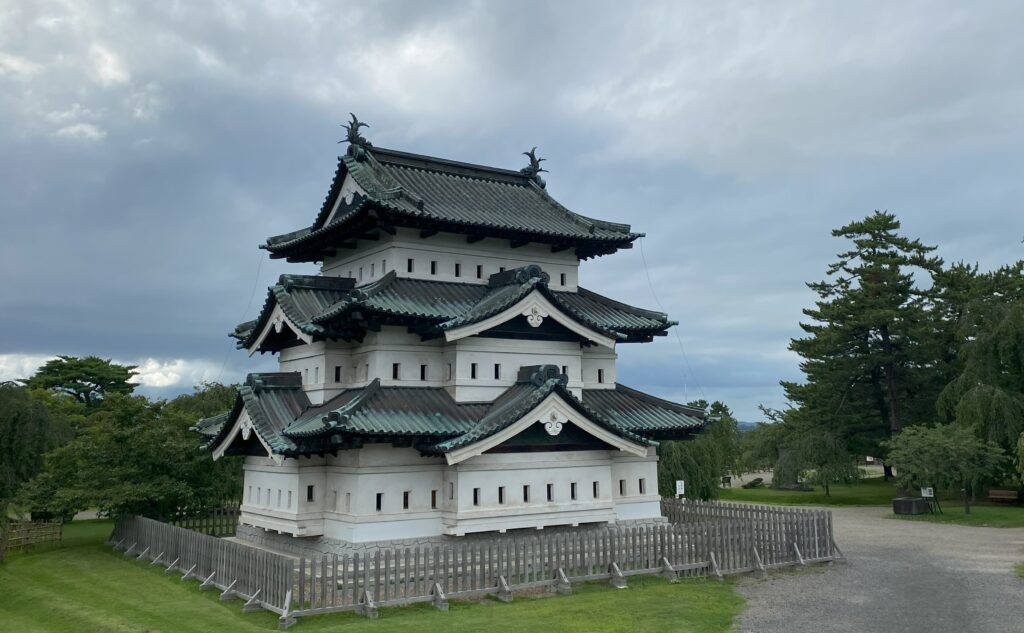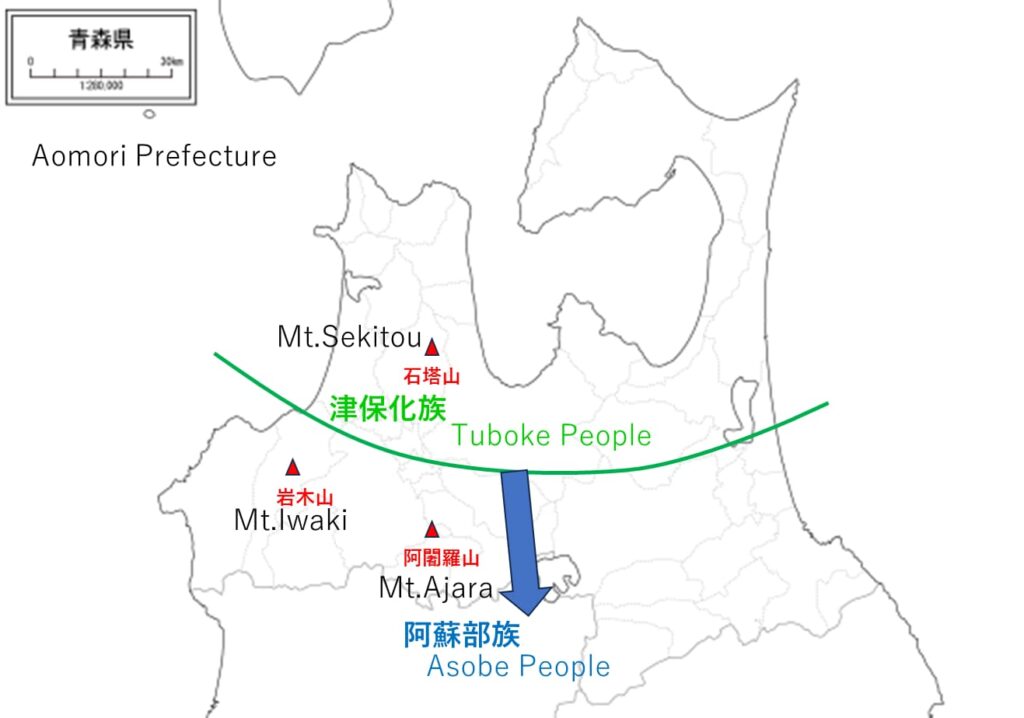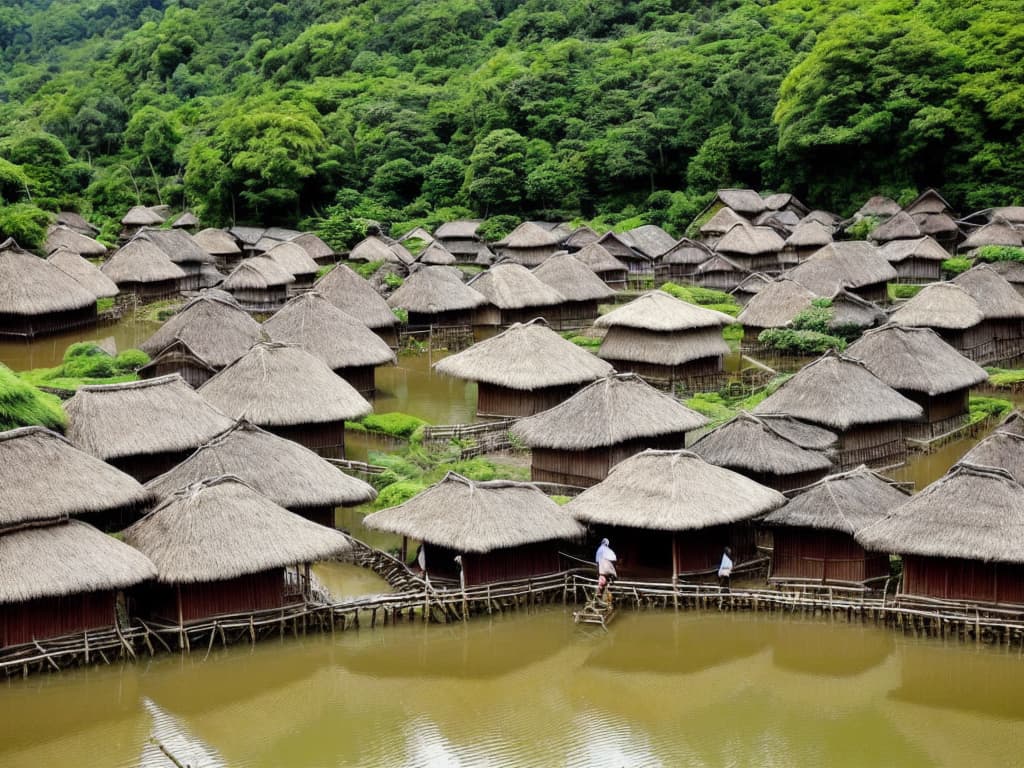- Tracing the Footsteps of the I’hins — From the Continent of Pan to Yista
- The Tragedy of the Aso Tribe — An Account from the Tsugaru Soto Sangunshi
- The Jomon Ruins of Tsugaru and the Memory of the Pan Continent
- Wisdom Preserved by the I’hins — Mixed Lineages and Peaceful Governance in OAHSPE
- References、Images Used
Tracing the Footsteps of the I’hins — From the Continent of Pan to Yista
In the early Edo period, the Satake clan—originally feudal lords of Hitachi Province (present-day Ibaraki Prefecture)—were relocated to what is now Akita Prefecture. As a result, the Akita clan, which had previously ruled the region, was displaced and, after moving between various locations, finally settled in Miharu (Tamura District, Fukushima Prefecture).
Although the Akita clan lost their homeland, they possessed a wealth of ancient documents passed down from the era of the Ando clan. Sadly, these documents were destroyed in the Great Fire of the Tenmei era. In response, the Akita clan took on the task of reorganizing the Tsugaru Rokugunshi (The Chronicles of the Six Counties of Tsugaru).

What remains today is the Tsugaru Soto Sangunshi (“The External Three Counties Chronicle”), a historical record from this compilation. While some claim it to be a forgery, it is also a work compiled by the Ando clan, who ruled the Tsugaru region from ancient times and sought to preserve their history. Therefore, dismissing it outright is not a fair assessment.
Of course, it must be acknowledged that this chronicle was written from the perspective of the “defeated” side of history. As such, it includes sentiments of resentment, and likely contains certain biases or subjective accounts.
Nevertheless, there is significant value in the fact that this work was based on extensive field research conducted throughout Japan during the Edo period. That alone makes it worth serious consideration—especially when investigating the story of the I’hins who fled to Yista, a narrative rooted in a distant past where written records no longer exist, and which borders on the mythic.
When studying such ancient times, oral traditions become crucial. Passed down through generations by local people, these stories often conceal hidden truths.
And when these oral accounts align with archaeological evidence—unearthed relics and ruins—they are no longer just folklore; they become part of our history.
The Tsugaru Soto Sangunshi includes numerous accounts of three peoples: the Aso tribe, said to have lived in Tohoku since before the submergence of the continent of Pan; the Tsuboka tribe, believed to be the I’hins who later migrated to Yista (ancient Japan); and the Arataki tribe, born from the intermingling of the two.
Through these historical accounts, I hope to explore the path of the I’hins who escaped to Yista and trace the legacy they left behind.
The Tragedy of the Aso Tribe — An Account from the Tsugaru Soto Sangunshi
The following is an excerpt from the Tsugaru Soto Sangunshi concerning a tragic episode involving the Aso tribe.
In ancient times, in the land of Ōura in Tsugaru, Mutsu Province, there lived a people known as the Aso tribe who had long been native to the region. One day, without warning, a great earthquake struck. Fire burst forth from beneath the earth, and the tribe was nearly wiped out by the flow of fiery mud.
Some of the Aso tribe managed to flee to Mount Ajara. However, they were soon subdued by the ruling power of the Tsuboka tribe and were forced into servitude for many years. Eventually, a warrior of the Aso tribe named Kamure rose up in defiance and led a rebellion against Tsuboka rule.
At that time, the Tsuboka commander Asatsuki, who was stationed in Nakayama, suffered defeat due to the lack of reinforcements from fellow clansmen. As a result, the Aso tribe regained control over the area around Mount Ajara.
The Aso tribe lived in the mountains, while the Tsuboka tribe were coastal dwellers. The two groups did not engage in trade or resource exchange, and tensions frequently led to border disputes. Later, a volcanic eruption at Mount Iwaki destroyed the ancestral lands of the Aso tribe, and the entire Tsugaru region fell under the control of the Tsuboka tribe.
Nevertheless, the Aso people endured for several generations and eventually made a resurgence. At that time, the two tribes agreed to peace, establishing the Nanpeiragawa River as the boundary between east and west.
However, the Tsuboka people from the western region—particularly from Morita-Ōdate, Andōura, and Nishihama—refused to accept this peace and launched an attack against the Aso tribe near the foothills of Mount Iwaki.
By then, the Tsuboka tribe had intermixed with people who had drifted ashore from foreign lands. These mixed descendants claimed the name of the god Aratama (Arataki) and became known as the Arataki tribe. With their growing power, they crushed the Aso tribe entirely.
However, a branch of the Tsuboka tribe that had remained in Nakayama formed an alliance with the surviving Aso people and resisted the rule of the Arataki. They sought to preserve the old customs and traditions.
This conflict persisted for generations. Eventually, warriors named Anahibiko and Nagasunehiko, who had fled from Yamatai, joined forces with the Arataki tribe. Together, they defeated the Nakayama Tsuboka and the remaining Aso tribe.
After that, the Aso and Tsuboka tribes attempted multiple uprisings, but they were defeated every time.
Source: Tsugaru Soto Sangunshi – “The Tragic Downfall of the Aso Tribe”
The Jomon Ruins of Tsugaru and the Memory of the Pan Continent
Tsugaru refers to the region around what is now Tsugaru City in Aomori Prefecture, Japan. Fortunately, this area is home to many archaeological sites from the Jomon period, and in 2021, several of them were registered as UNESCO World Heritage Sites.
Among these sites, one of the most notable is the Odai Yamamoto Site. From this location, fragments of pottery dating back approximately 15,000 years have been unearthed. These artifacts show that pottery-making techniques already existed at that time—roughly 10,000 years after the sinking of the Pan continent.
According to the Tsugaru Soto Sangunshi, a historical chronicle introduced in this discussion, there were people long settled in this region known as the Asobe Tribe (Asobe-zoku).

If the Aso Tribe had indeed inhabited this land before the submergence of the Pan continent, then Japan, although once part of the greater Pan landmass, may not have been entirely connected by land. This could explain why the Japanese archipelago did not suffer direct destruction during the continent’s collapse.
That said, the region was not entirely spared from natural disasters. The Tsugaru Soto Sangunshi describes how the area experienced major earthquakes and volcanic eruptions, which led to the deaths of many members of the Aso Tribe.
Later, a group known as the Tsuboka Tribe (Tsuboke-zoku) is said to have arrived in Tsugaru from across the sea. The Tsuboka people are believed to have settled along the coast, while the surviving Aso Tribe moved into the mountains.
This division in territory likely occurred because the Aso Tribe had already been significantly weakened by natural disasters. If the Tsuboka had been present before the disaster, they too would have suffered its effects. Therefore, it is reasonable to conclude that the Tsuboka migration occurred after the calamities.
In this light, it seems likely that the Aso Tribe, forced to retreat into the mountains after their losses, gave way to the arrival of the Tsuboka—marking a major shift in the region’s demographic and spiritual history.

白地図専門店様の白地図を使用
Wisdom Preserved by the I’hins — Mixed Lineages and Peaceful Governance in OAHSPE
The author believes that the Tsuboka people (Tsuboke-zoku) were the I’hins who fled to Yista. However, according to historical sources, the Asobe people (Asobe-zoku), who fought and lost against the Tsuboka, were brought under their control. This description feels somewhat inconsistent, considering that the I’hins were originally a peaceful people who followed the Creator and avoided conflict.
The same sources suggest that there were two branches of the Tsuboka: one composed of native inhabitants and the other of newcomers from foreign lands. In this context, it’s possible that the indigenous Tsuboka had already been in conflict with the Asobe, while the newly arrived Tsuboka — who came after a natural disaster — intermarried with local groups to form what became known as the Arabaki people (Arabaki-zoku). This Arabaki lineage later ruled over the Tohoku region for many generations.

The I’hins are known to have possessed highly developed spiritual sensitivity, including the ability to hear the voice of the Creator. They were also said to have advanced technological and cultural knowledge. Over time, however, as they intermarried with local populations, their spiritual capacities gradually diminished. Even so, the Arabaki people, who carried I’hin heritage, governed the Tohoku region peacefully for a long period, maintaining regional unity until the Yamato court began its full-scale incursions into the area during the Asuka period.
Interestingly, OAHSPE contains a passage that seems to reflect this peaceful governance. It states that even though those of I’hin descent lost their ability to hear the Creator’s voice after intermixing with the I’huans, they still brought wisdom and peace to the people they ruled:
The tribes that went in the two ships to the north land (Japan), no man could draw the line, after a thousand years, betwixt them and the I’huans, for they mingled therewith, and were lost, as I’hins. Nevertheless, they redeemed the barbarians into wisdom and peace.
OAHSPE, The Lords’ Fifth Book, Chapter 5:14
This description appears to align with the peaceful rule of the Arabaki people in the Tohoku region. At least, that is the interpretation the author would like to offer.
References、Images Used
| Books | Authors | Publishers |
|---|---|---|
| OAHSPE ”A New Bible in the Worlds of Jehofih and His angel embassadors.” | John B. Newbrough | OAHSPE PUBLISHING ASSOCIATION |
| 東日流外三郡誌 1古代篇(上) | 東日流中山史跡保存会 | 八幡書店 |
Images:Generated from stable diffusion(model:XSMerge-RealisticVisionV3-ForArchi)
Blank Map: Courtesy of Hakuchizu-Senmon (Specialist in Blank Maps)



コメント